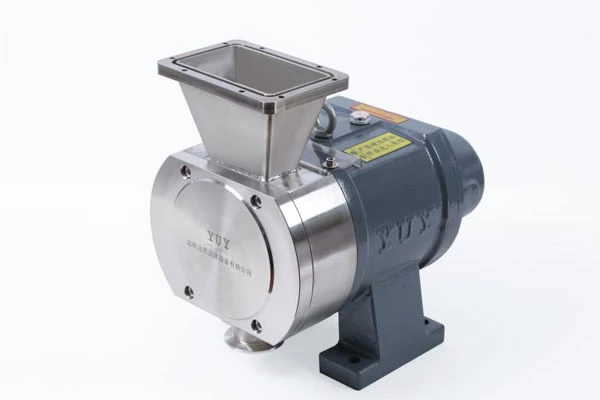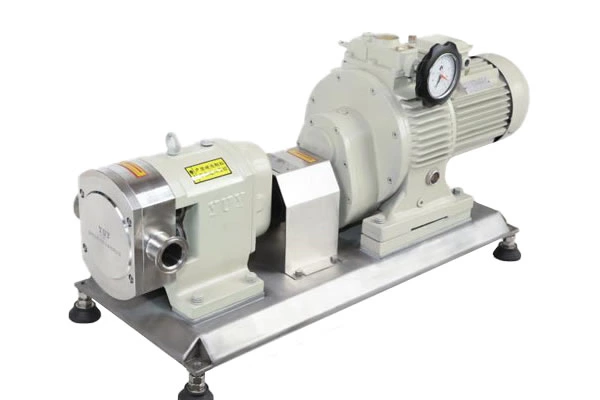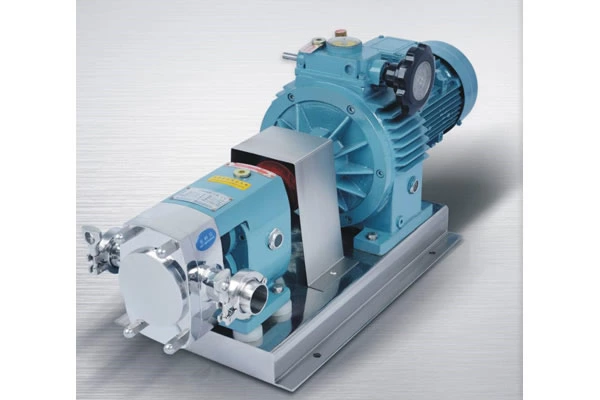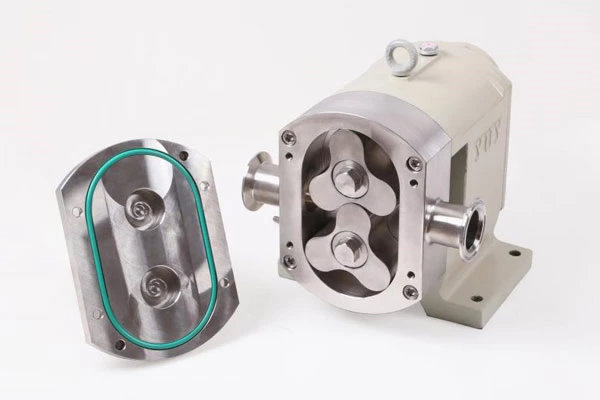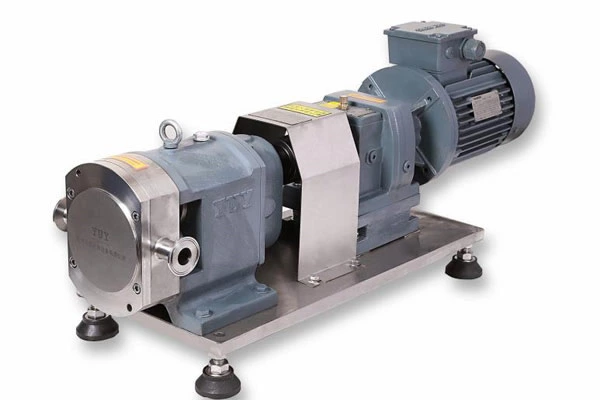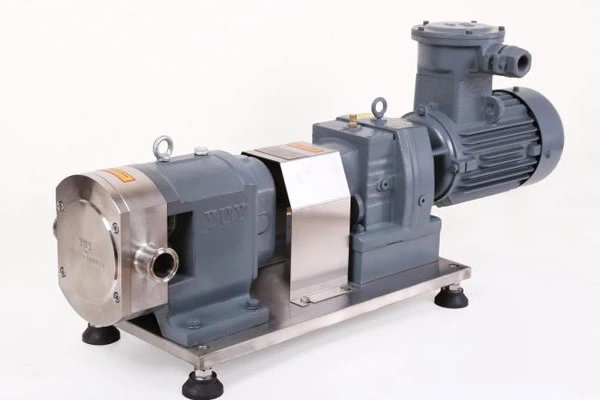Working Principle Of Sanitary Rotary Cam Pump
The working principle of Sanitary Rotary Lobe Pump is that the centrifugal pump can send water out due to the action of centrifugal force. Before the water pump starts working, the pump body and inlet pipe must be filled with water to form a vacuum state. When the impeller rotates rapidly, the blades cause the water to rotate quickly, and the rotating water flies away from the impeller under the action of centrifugal force. After the water in the pump is thrown out, the central part of the impeller forms a vacuum zone. The water in Shuiyuan is pressurized into the inlet pipe through the pipeline network under the action of atmospheric pressure (or water pressure). By continuously cycling in this way, continuous pumping can be achieved. It is worth mentioning that before starting the centrifugal pump, it is necessary to fill the pump casing with water, otherwise it will cause the pump body to heat up, vibrate, reduce the water output, and damage the pump (referred to as "cavitation"), resulting in equipment accidents!
There are many types of sanitary rotary cam pumps, and the common classification methods are as follows: 1. Classified by impeller suction method: single suction centrifugal pump, double suction centrifugal pump. Divided by the number of impellers: single-stage centrifugal pump, multi-stage sanitary rotary cam pump. Divided by impeller structure: open impeller centrifugal pump, semi open impeller centrifugal pump, closed impeller centrifugal pump. Divided by working pressure: low-pressure centrifugal pump, medium pressure centrifugal pump, high-pressure centrifugal pump, side standing centrifugal pump.
Five key points for using sanitary rotary cam pumps:
1. Test drive work: Check if the connectors are loose; Rotate the coupling by hand to make the rotor rotate in circles, and check whether the unit rotates flexibly, whether there is any noise or uneven feeling of weight, in order to determine whether there are foreign objects or whether the shaft is bent in the pump, whether the sealing components are installed correctly, etc; Check if the clean No. 20 lubricating oil in the sealed chamber has been filled into 1/2 of the chamber space; Is the surface of the pump unit clean; Unit steering no-load test.
2. Manual start: Fill the pump (first time), slightly open the outlet valve, start the motor, and gradually open the outlet valve until the pressure rises and it is confirmed that the pump unit is running smoothly to meet the operating conditions.
3. Operation inspection: When the pump is running normally at the power frequency (variable frequency), the readings of its pump set ammeter, voltmeter, inlet and outlet vacuum gauge, pressure gauge, flow meter and other instruments should be checked and recorded regularly. Is the vibration, noise, temperature rise, etc. of the unit normal. There should be no obvious aviation fuel leakage at the shaft seal.
4. Normal parking: Close the discharge valve, lightly load the pump, and stop the motor.
5. Emergency parking situation:
⑴ Abnormal indication of the pump motor working ammeter (excessively large or becoming very small); The pump system is making abnormal noises.
⑵ The vacuum pressure gauge at the inlet and outlet of the pump indicate abnormal readings, causing significant vibration and abnormal noise in the pump body, resulting in a serious decline in performance.
⑶ The pump motor produces an odor, aviation fuel leaks from the shaft seal, and the bearing temperature exceeds 75 degrees.
